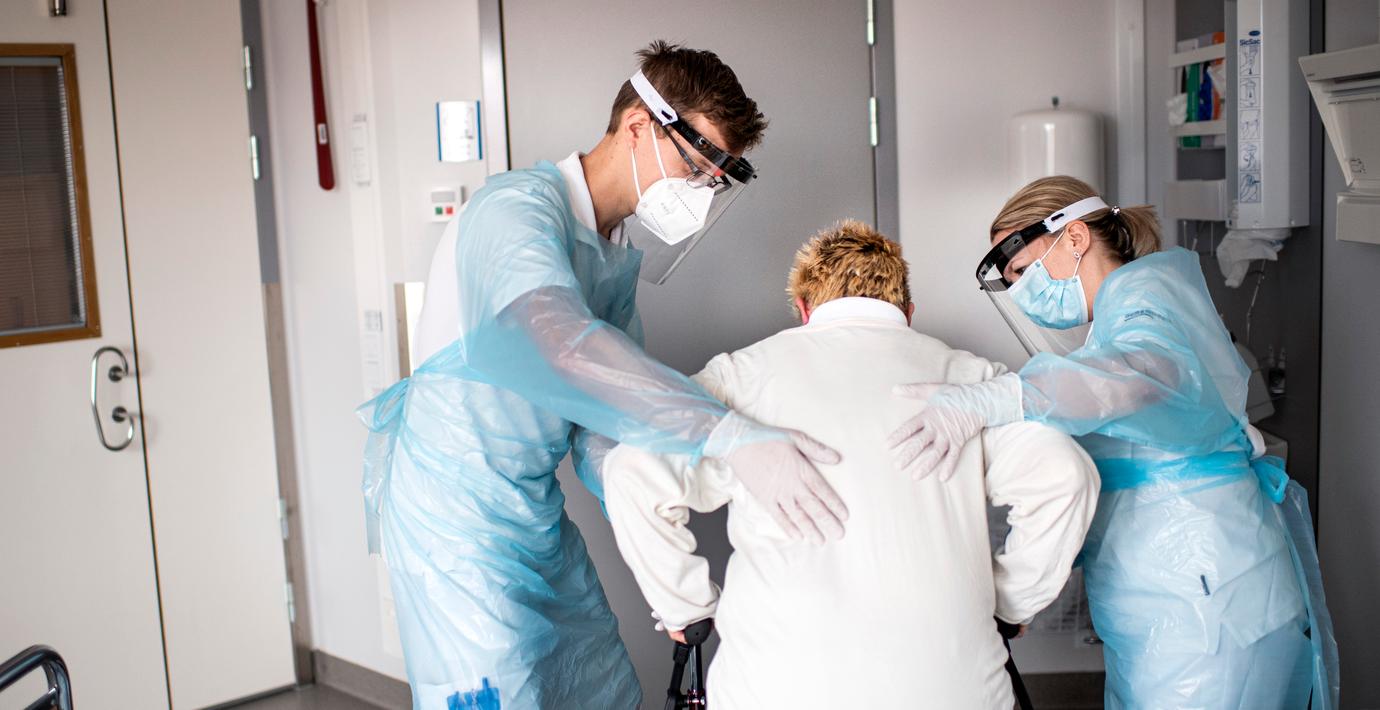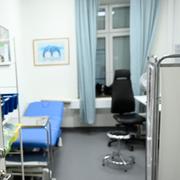
Tusentals svenskar kan lida av ptsd efter covid-19: ”Som att vi varit indragna i krig”
Tusentals av de svenskar som vårdats för covid-19 tros lida av ptsd, posttraumatiskt stressyndrom, rapporterar Dagens Nyheter.
Nyligen publicerades en brittisk studie i där forskare följt patienter som vårdats för tidigare coronavirus – en tredjedel av dem diagnostiserades med ptsd. Nu ställer svenska vårdcentraler in sig på en våg av hjälpsökande.
– Jag tror vi måste tänka att det är som om vårt land varit indraget i ett litet krig, säger Katharina Stibrant Sunnerhagen, professor i rehabiliteringsmedicin på Sahlgrenska universitetssjukhuset.
bakgrund
Posttraumatic stress disorder
Wikipedia (en)
Posttraumatic stress disorder (PTSD) is a mental disorder that can develop after a person is exposed to a traumatic event, such as sexual assault, warfare, traffic collisions, child abuse, or other threats on a person's life. Symptoms may include disturbing thoughts, feelings, or dreams related to the events, mental or physical distress to trauma-related cues, attempts to avoid trauma-related cues, alterations in how a person thinks and feels, and an increase in the fight-or-flight response. These symptoms last for more than a month after the event. Young children are less likely to show distress, but instead may express their memories through play. A person with PTSD is at a higher risk for suicide and intentional self-harm.Most people who experience traumatic events do not develop PTSD. People who experience interpersonal trauma such as rape or child abuse are more likely to develop PTSD as compared to people who experience non-assault based trauma, such as accidents and natural disasters. About half of people develop PTSD following rape. Children are less likely than adults to develop PTSD after trauma, especially if they are under 10 years of age. Diagnosis is based on the presence of specific symptoms following a traumatic event.Prevention may be possible when counselling is targeted at those with early symptoms but is not effective when provided to all trauma-exposed individuals whether or not symptoms are present. The main treatments for people with PTSD are counselling (psychotherapy) and medication. Antidepressants of the selective serotonin reuptake inhibitor type are the first-line medications for PTSD and result in benefit in about half of people. Benefits from medication are less than those seen with counselling. It is not known whether using medications and counselling together has greater benefit than either method separately. Medications, other than SSRIs, do not have enough evidence to support their use and, in the case of benzodiazepines, may worsen outcomes.In the United States, about 3.5% of adults have PTSD in a given year, and 9% of people develop it at some point in their life. In much of the rest of the world, rates during a given year are between 0.5% and 1%. Higher rates may occur in regions of armed conflict. It is more common in women than men. Symptoms of trauma-related mental disorders have been documented since at least the time of the ancient Greeks. During the World Wars, the condition was known under various terms including "shell shock" and "combat neurosis". The term "posttraumatic stress disorder" came into use in the 1970s in large part due to the diagnoses of U.S. military veterans of the Vietnam War. It was officially recognized by the American Psychiatric Association in 1980 in the third edition of the Diagnostic and Statistical Manual of Mental Disorders (DSM-III).
Läs mer
Omni är politiskt obundna och oberoende. Vi strävar efter att ge fler perspektiv på nyheterna. Har du frågor eller synpunkter kring vår rapportering? Kontakta redaktionen



